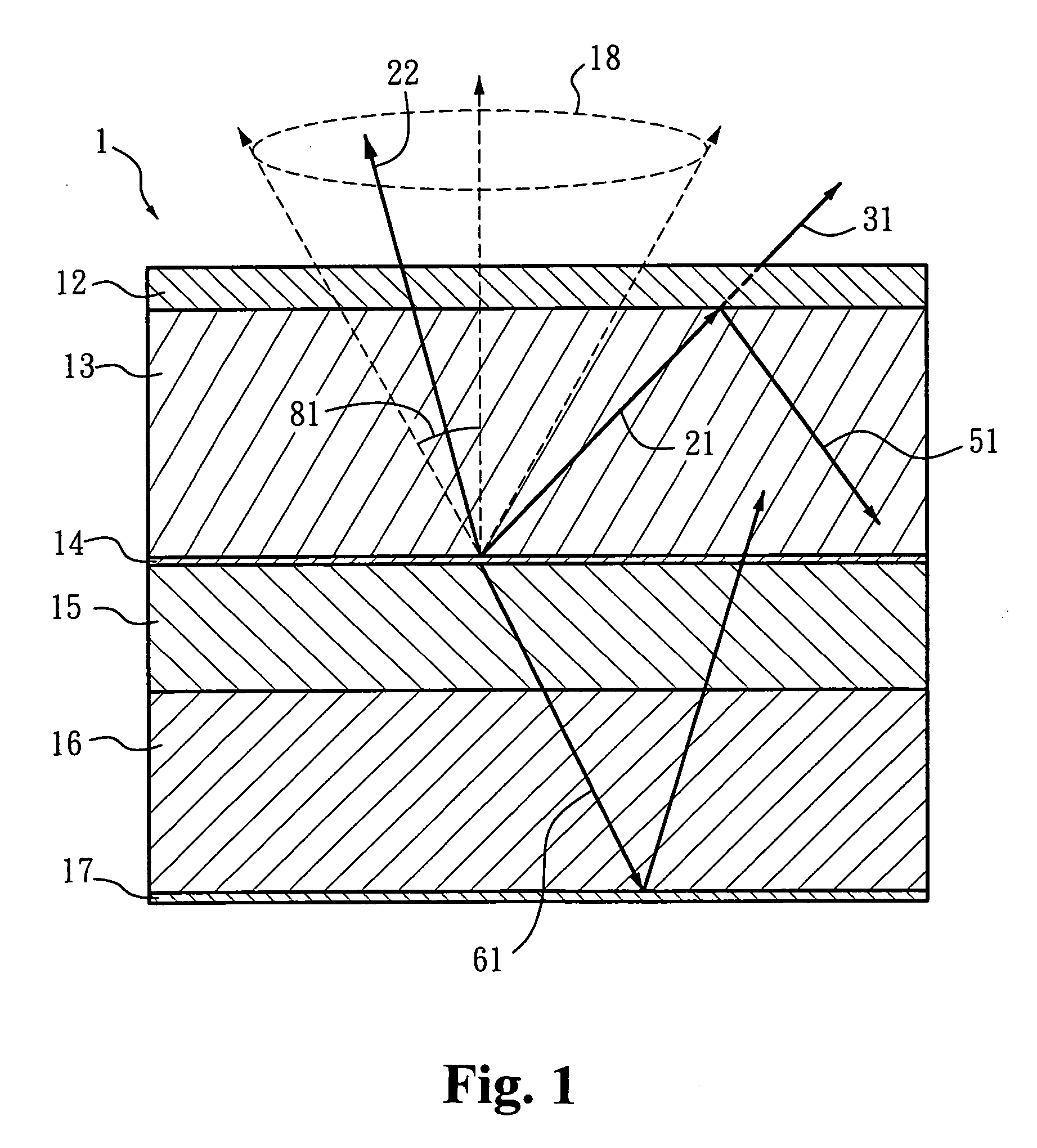Light-emitting devices with high extraction efficiency
a light-emitting device and high-efficiency technology, applied in the direction of semiconductor devices, basic electric elements, electrical appliances, etc., can solve the problems of increased total internal reflection (“tir”), serious deterioration of total luminescent efficiency, and too-large difference of refractive indices of interfaces, so as to improve the light extraction efficiency of the light-emitting device
- Summary
- Abstract
- Description
- Claims
- Application Information
AI Technical Summary
Benefits of technology
Problems solved by technology
Method used
Image
Examples
Embodiment Construction
[0035] The present invention is described in more detail by referring to the accompanying drawings. The drawings are to describe the preferred embodiments. However, the present invention is exemplified with several embodiments but is not limited by said embodiments. Said embodiments are to disclose the scope of protection of the present invention to persons of ordinary skill in the art in more detail.
[0036] According to the present invention, a light-emitting device represents an organic / inorganic electro-luminance light-emitting device with at least one light-emitting layer that can emit light or generate light by applying external power. More specifically, the refractive index is aimed at the peak wavelength of the major emitted light generated by the light-emitting layer. The light-tunneling layer refers to a dielectric layer with a refractive index lower than that of the light-exiting surface layer of the light-emitting device. Said layer is disposed on the light-exiting surfac...
PUM
 Login to View More
Login to View More Abstract
Description
Claims
Application Information
 Login to View More
Login to View More - R&D
- Intellectual Property
- Life Sciences
- Materials
- Tech Scout
- Unparalleled Data Quality
- Higher Quality Content
- 60% Fewer Hallucinations
Browse by: Latest US Patents, China's latest patents, Technical Efficacy Thesaurus, Application Domain, Technology Topic, Popular Technical Reports.
© 2025 PatSnap. All rights reserved.Legal|Privacy policy|Modern Slavery Act Transparency Statement|Sitemap|About US| Contact US: help@patsnap.com



